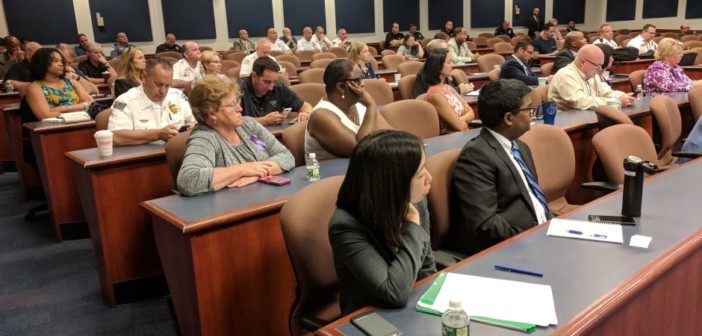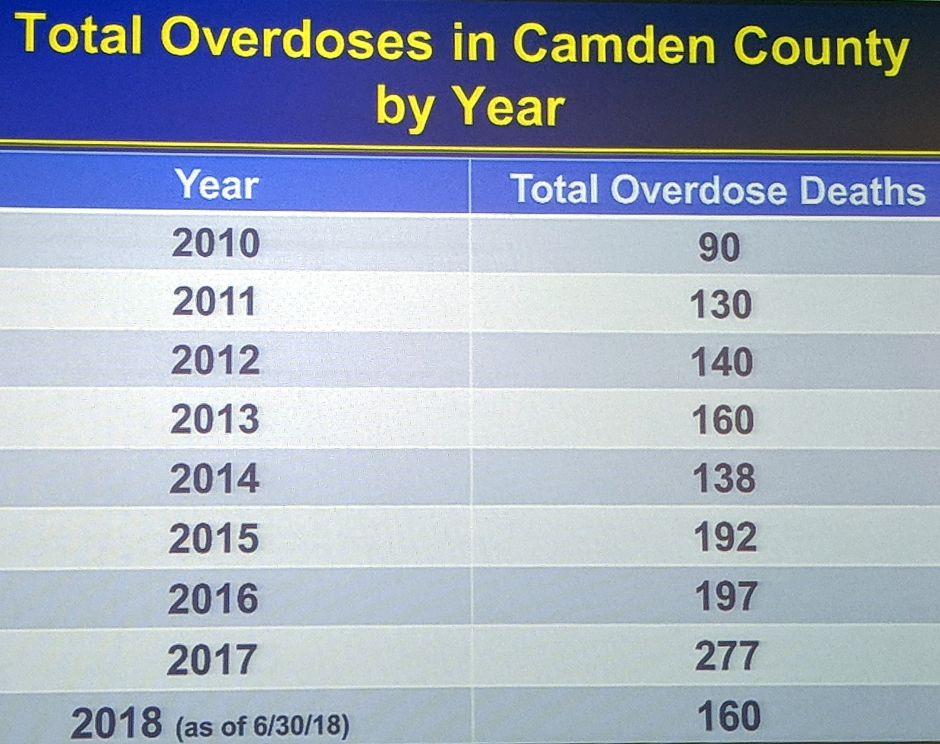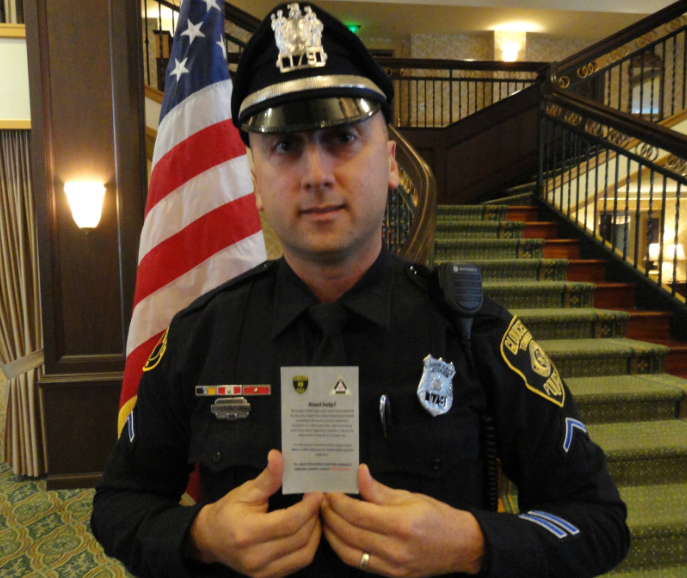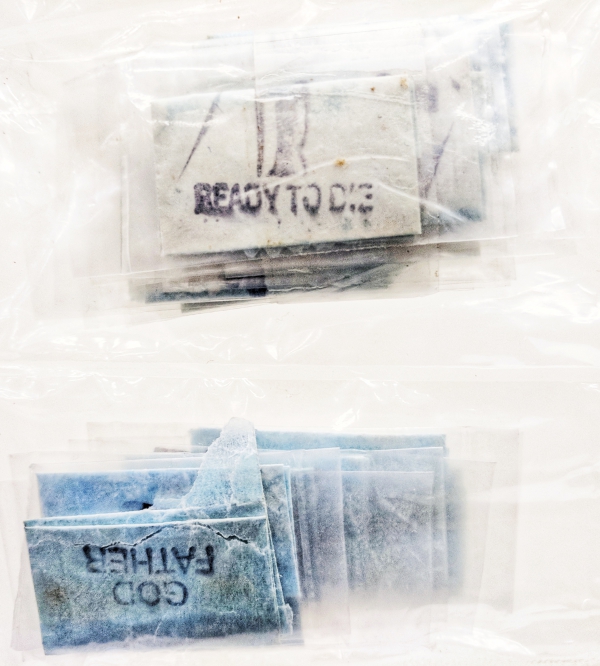In a summit held Tuesday at the Camden County Police Academy, law enforcement representatives spoke about multifaceted efforts to curtail the effects of addiction in the region.
By Matt Skoufalos | July 25, 2018
For the past four years, Camden County has been working to solve its drug issues by pushing toward strategies that don’t rely exclusively on arrests.
Programs like Operation SAL (Save A Life), the consolidation of its mental health and substance abuse agencies, and a broad emphasis on community policing initiatives are among a handful of its community-focused approaches to the problem.
That makes the region among the more forward-thinking of the six counties covered by the Liberty Mid-Atlantic High Intensity Drug Trafficking Area (HIDTA), said its executive director, Jeremiah Daley.
“[The county is] strong on enforcement, but it also has novel approaches to changing the trajectory of persons with opioid use disorders, getting to them before full involvement in the criminal justice system,” Daley said.
Residents concerned about the county’s addiction problems should likewise look beyond the body count to a variety of indicators, Daley said Tuesday at a community policing summit focused on the opioid crisis.
“We have to be careful not to rely on one benchmark as being the storyteller,” Daley said.
“Overdose deaths alone may be quick and easy to calculate,” but don’t reflect other potential indicators, such as treatment admissions (Camden County is fourth-highest in the state), drug and asset seizures, narcan administrations, and emergency department visits, he said.
The work started at the top, with the New Jersey State Police-developed Drug Monitoring Initiative (DMI), a first-of-its-kind, statewide index that gauges tactical drug information among police departments and health agencies.
Such data offer strategic as well as trend information, which tell Daley that the abuse of stimulants like methamphetamines and cocaine, alone or in combination with opioids, is on the rise.
“The street drugs that are out there right now are more pernicious than ever,” he said, both in terms of their toxicity in the body, and their ease of being brought into the country through the U.S. mail system.
Even with customs and border protection agents profiling more packages than people, postal inspectors comb through more mail than law enforcement agencies ever will, Daley said. Of the five international service centers operated nationally by the U.S. Postal Service, the busiest one is closest to South Jersey, at JFK International Airport, which handles a half-million packages a day.
But whether authorities seize opioids from Colombia and Mexico, synthetic fentanyl analogues from China, or factory-produced pharmaceuticals from physicians’ offices, “these are virtually the same in terms of their effect on the body,” Daley said.
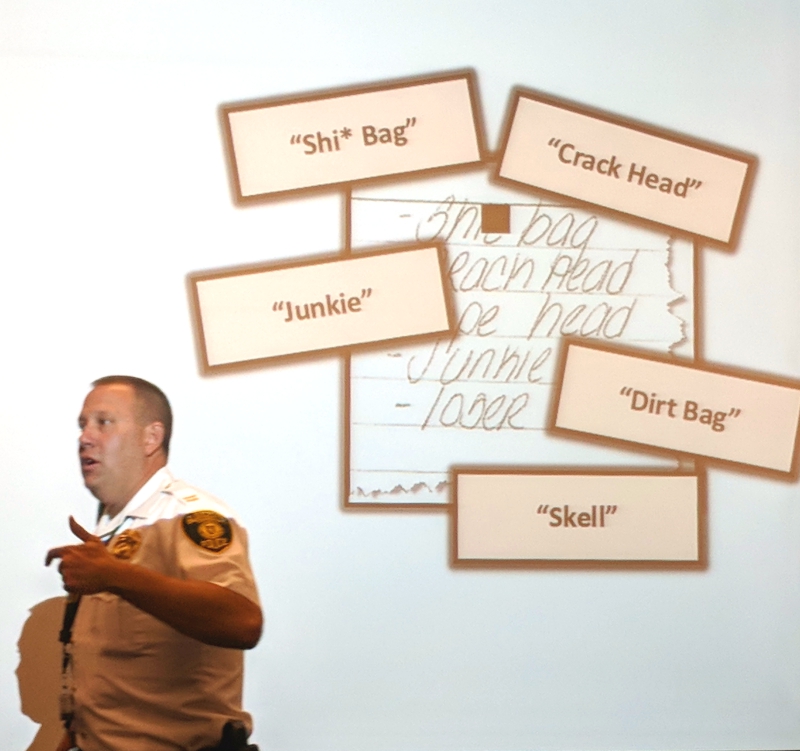
Gloucester Twp Police Capt. Brendan Barton speaks about the stigma around addictions. Credit: Matt Skoufalos.
‘We need to change the hearts and minds of the community’
Intercepting victims of addiction before their disorders claim their lives is the overarching focus of all this policymaking and enforcement.
Yet even when lives are lost in drug-related deaths, convicting dealers who sell those fatal doses can be a tricky proposition, said Camden County Assistant Prosecutor Nevan Soumilas.
For a start, overdose victims may have multiple chemicals in their bloodstream at the time of their deaths.
Proving that only one of them caused the death, and then linking that substance to a single seller, complicates prosecution, Soumilas said. Investigators rely greatly on cell phone records and peripheral evidence, but not as much as they do testimony from those close to the victims.
“The statute requires proof that the individual charged has distributed to the deceased,” she said. “We want people to call police, and stick around, and say, ‘I bought with the deceased, and this is where we bought it, this is the phone number we used.'”
Since dealers market their heroin with stamps and graphics encouraging repeat customers, investigators can also link those packaging materials to specific drug sets when prosecuting an overdose death, Soumilas said.
Another of the biggest hurdles for prosecutors involves community attitudes towards addiction. That an overdose victim may have knowingly ingested an illegal drug is not a valid criminal defense, Soumilas said—but juries might not see it that way.
“In cases where we charge and we’re not successful, we need to change the hearts and minds of the community that make up the jury pool,” she said. “We can’t have people sitting back there and saying, ‘This 21- or this 22-year-old kid took this and ingested it on their own.’”
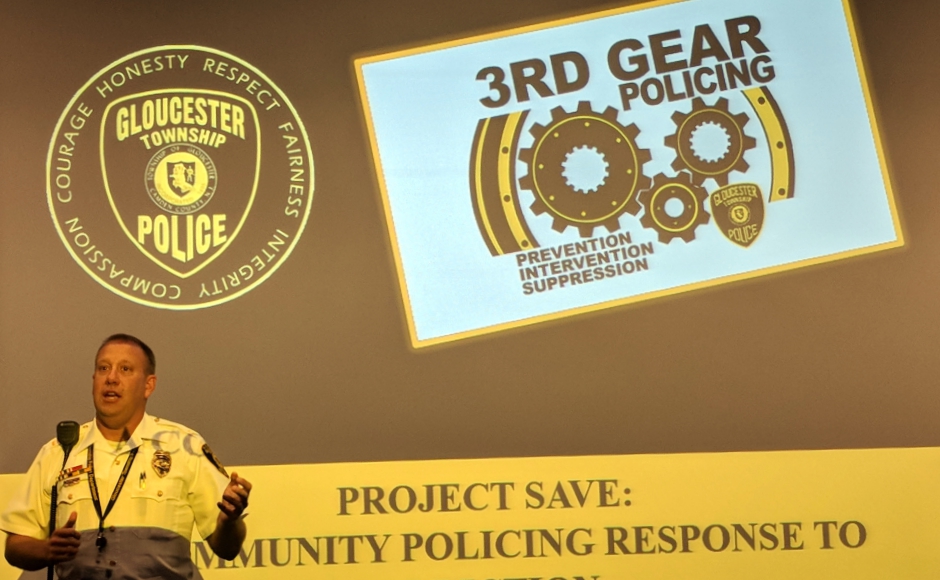
Gloucester Twp Police Capt. Brendan Barton speaks about his department’s community policing efforts. Credit: Matt Skoufalos.
Changing community attitudes has been a pillar of the “third-gear policing” strategies employed by the Gloucester Township police department, where officers have seen a reduction in violent crime rates by addressing the underlying addiction issues through community outreach.
Programs like its Substance Abuse Victimization Effort (SAVE) help those charged with crimes to enroll in addictions treatment and avoid becoming repeat offenders.
Referrals are provided by police at the point of arrest, through a 24-hour warmline, and in court from the township SAVE advocate.
“He’ll see those cases, try to have a conversation with them, and offer our services,” said Gloucester Township Police Captain Brendan Barton. “If people want to participate, he’ll have a private conversation with them.
“At no time is it mandatory or does it get anything dismissed; it will just help them get over their addiction,” he said.
Like Soumilas, Barton noted the need for advocates to drive a change in community thinking around addictions. Instead of pejoratives, like “junkie,” “dirtbag,” and “skell,” he encourages the public to remember that people with addictions are parents, siblings, and partners.
“We have officers who have lost loved ones, so it does affect us also,” Barton said.
Even as communities try to get their arms around the multifaceted challenges of addictions, drug dealers reliably change up their tactics, making the task of policing ever more complicated.
‘This is all business’
Lieutenant Bob Ferris of the Camden County Prosecutor’s Office (CCPO) narcotics unit described the increased risks that officers face with the added dangers of fentanyl, a popular synthetic opioid that can be 30 to 50 times as potent as heroin.
Even a small amount of fentanyl can trigger an overdose, and the ease of its absorption through the skin means investigators must wear personal protective gear—a mask, gloves, respirator, and a full body suit—and check air quality when the drug is present.
Like other synthetic opioids, fentanyl is an anesthetic that was initially introduced to the heroin trade to cut purer forms of the drug, allowing dealers to stretch their supplies.
Unlike other cutting agents, which range from brown sugar to morphine, the potency of fentanyl contributes to a greater risk of overdose. That only makes it more desirable to users, and dealers capitalize on the marketability of their product with brand names that increase customer associations with its potency.
“We’re hearing from some dealers that users aren’t even interested in heroin if it isn’t cut with fentanyl,” said CCPO Detective Shane Morgan, who showed off confiscated heroin packages stamped with names like “Godfather” and “Ready to Die.”
“This is all business,” Morgan said. “The stamp, it’s branding, marketing, word-of-mouth advertisement. “When users OD, it increases business.”

Addictions awareness advocate Patty DiRenzo points to her son’s name on a wall of those lost to opioid abuse in Camden County. Credit: Matt Skoufalos.
As the adage goes, “city users die on the streets; suburban users die in their bedrooms,” and both are connected to “the phenomenon of social isolation,” Daley said.
Addictions can be driven by a variety of factors, but the “false sense of connectivity and relationships” that online networks can instill is one influence over which authorities hold little sway.
“Young people tend to isolate as a result of that,” he said.
“The other piece of that is that social media itself facilitates some of the distribution of drugs.
“Playstations, Xboxes allow for private communications. The learning curve comes from the social media interaction,” Daley said.
Without strong parental oversight and involvement, risks are heightened at an early age, he said.
“All of us have a duty to ensure that people stay away from these kinds of substances,” Daley said. “We can put all the efforts we have into stopping the supply, but it will be meaningless unless we stop the demand.”
NJ Pen is free thanks to regular, small contributions.
Please support our work.
Get e-mails, follow us on Facebook, Twitter, and Instagram, or try Direct Dispatch, our new text service.

